What’s a Value Proposition? It’s What Your Business Does Better Than Anyone Else
Why do your customers buy from you? What motivates people to choose you, to choose your products over the hundreds of alternatives? What makes your company, and your products, better than the rest?
The answer: your value proposition.
If you can perfect your value proposition, you can increase your conversion rate and improve your marketing strategies across many channels. Learning to present the value your company and products deliver in a compelling way is one of the most high-value, wide-reaching marketing activities.

Free Reading List: Conversion Optimization for Beginners
Turn more website visitors into customers by getting a crash course in conversion optimization. Access our free, curated list of high-impact articles below.
Get our Conversion Optimization reading list delivered right to your inbox.
Almost there: please enter your email below to gain instant access.
We’ll also send you updates on new educational guides and success stories from the Shopify newsletter. We hate SPAM and promise to keep your email address safe.
What is a value proposition?
A value proposition is the value you promise to deliver to your customers post purchase. It’s ultimately what makes your product attractive to your ideal customer. A compelling value proposition meets three criteria:
- It’s specific. What are the specific benefits your target customer will receive?
- It’s pain-focused. How will your product fix the customer’s problem or improve their life?
- It’s exclusive. How is it both desirable and exclusive? How well does it highlight your competitive advantage and set you apart from competitors?
Don’t confuse brand slogans, catchphrases, or even a positioning statement with a value proposition as they’re different things.
Here’s a visualization that will help you avoid that trap.

Your value proposition should focus on the superpowers that potential customers get, not the product. Rarely is your value proposition the product itself or its features. Instead, it’s the way the brand or product fixes a meaningful pain point, improves the lives of your target audience, and the way it makes them feel (like they have superpowers, for example).
A value proposition should be front and center when a visitor arrives on your site. Although it’s often found above the fold on the homepage, you should be aware of other common entrance points (e.g., a landing page, category pages, blog posts, and product pages).
Even if you manage to create an effective value proposition, it won’t drive sales if it’s tucked away in a dusty corner of your website or absent on high purchase intent pages.
How to write a unique value proposition
So, what goes into a good value proposition, and where should you begin?
1. Gather voice of customer copy
The best value propositions use voice of customer copy. That is, they use the exact words of your current customers to hook your future customers.
For example, if they were interviewed for a case study, how would your target customers describe your product? How does it improve their lives? How do they describe your company? Why do they choose to associate with your brand?
Interview your customers or send out a survey to better understand how they speak about you, both to other people and to themselves. Pay attention to common words and phrases they use. Your visitors should see themselves in your value proposition. The language you use plays a big role in shaping their perspective.
2. Emphasize clarity before creativity
Above all, you must ensure your value proposition is clear. Sounds obvious, right? Your value proposition needs to serve many purposes, so achieving crystalline clarity can be quite difficult.
When evaluating your draft, ensure it answers the following questions:
- What product are you selling?
- Who should buy your product?
- How will buying your product improve the visitor or their life?
- Why should the visitor buy from you and not your competitors?
- When will the value be delivered?
Your value proposition should be relatively short—two or three short sentences, maximum. Every word should improve clarity or make your main selling point more compelling, otherwise it needs to be cut.
3. Focus on benefits, not hype
How many “World’s Best Coffee” signs would you see in store windows walking down just one busy New York City street? Dozens. Each sign you encounter would make it a little more difficult to believe the previous one.
Hype, which can come in the form of superlatives (“best”) and exaggerations (“world’s best”), can be dangerous that way. Instead, focus on distinct benefits and the concrete value your product delivers.
If you need to use hype to sell your products, it’s a sign that your value proposition is not well defined. Or, perhaps, even that your product is not as valuable as you think.
Examples of strong value propositions
The best way to get a feel for how value propositions work and how to get them right is to look at some strong examples.
1. BustedTees
BustedTees uses “BustedTees brings you the highest quality graphic tees on the net” as its homepage value proposition.
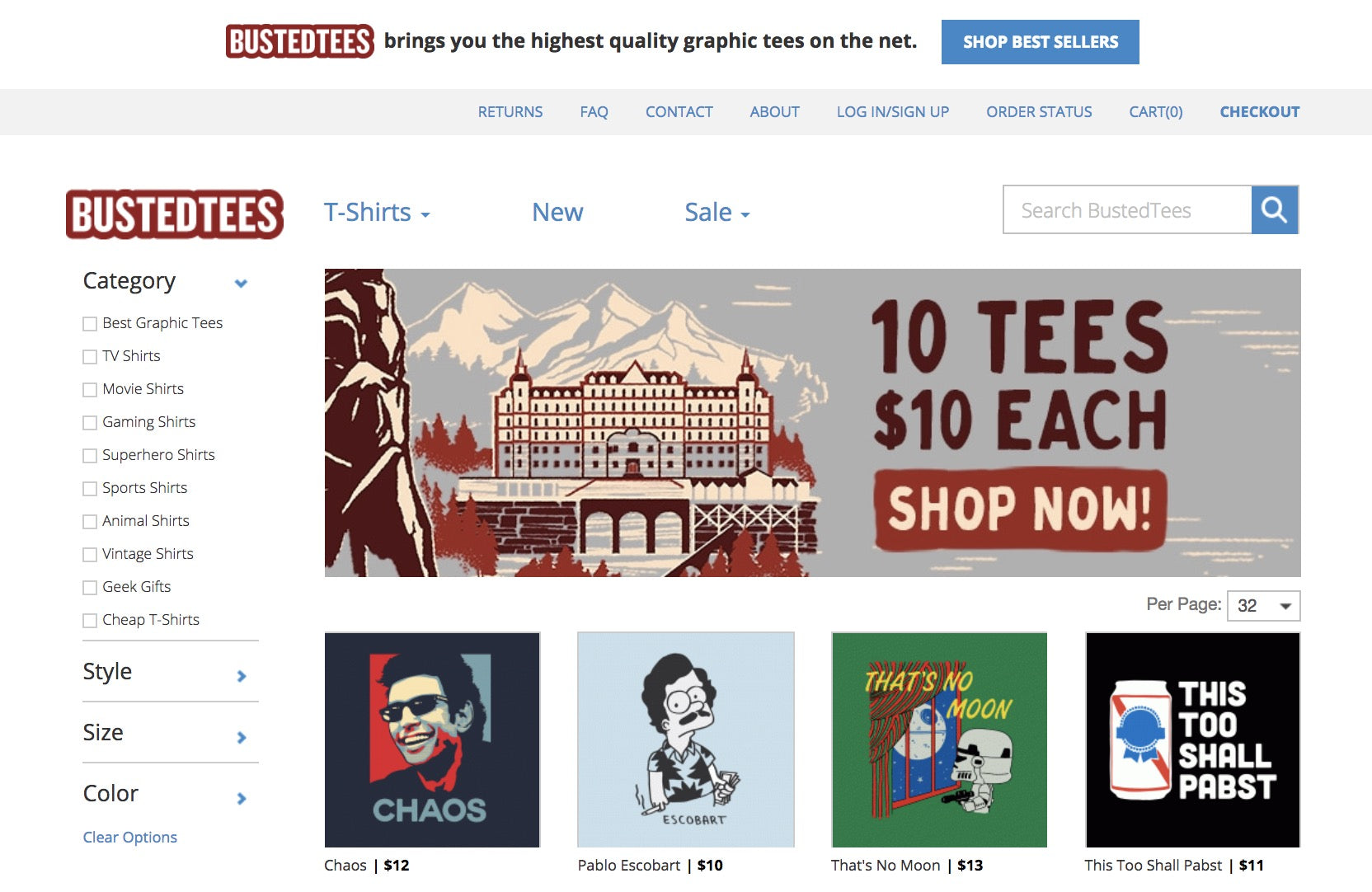
In this case, it’s betting on the quality of its production materials and designs. The value proposition is small but centered at the top of the page.
The site appears to only display the value proposition to first-time visitors, who are more likely to be unfamiliar.
Note how the value proposition is followed quickly by a relevant call to action. “Hey, we have high quality graphic tees. Want to shop our bestselling graphic tees?” If your value proposition does its job, it motivates and inspires action, so make it easy for visitors to take that action.
2. Novo Watch
Novo Watch promises to deliver “Timepieces handmade in Alberta from repurposed pieces of history.”

Instantly, you know the difference between a watch from Novo Watch and one of its competitors. The value is unique and undeniably different.
When you arrive on the site, the value proposition fills the entire page, but you’ll also find the value proposition reiterated on the product pages.
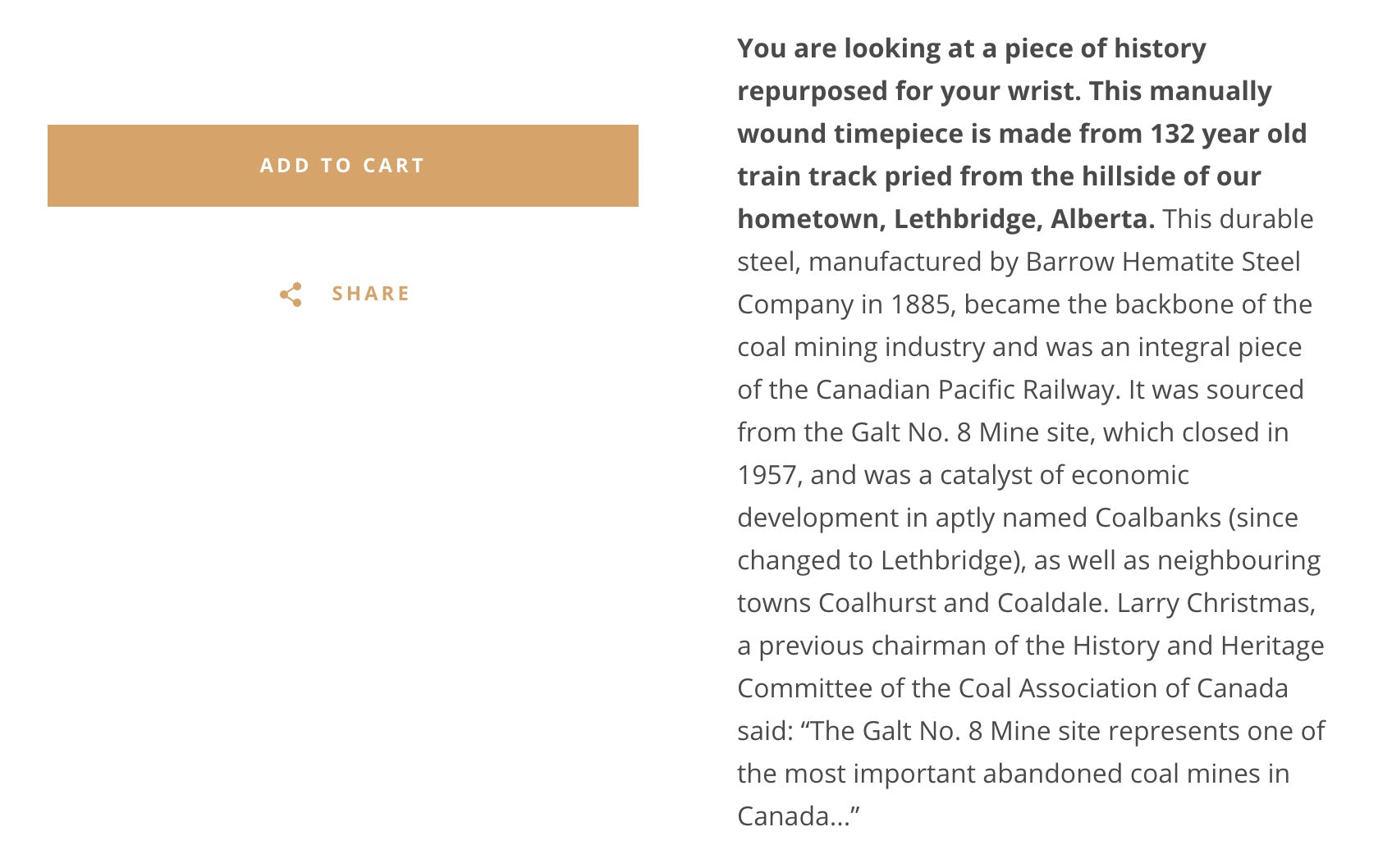
The continuity from the homepage to the product page is immediately evident. Phrases like “manually wound timepiece” and “132 year old train track” reinforce the value proposition, creating a clear message match.
3. Studio Neat
Studio Neat creates simple products that solve common, everyday problems. That value proposition and brand ethos is communicated throughout, even though it’s not explicitly stated on the homepage.

Simple products that deliver simple but desirable value. “Tripod mount for smartphones,” “Wood docks for Apple stuff,” “Wide-grip stylus,” “Make and store simple syrup,” etc.
The same theme is continued on product pages.
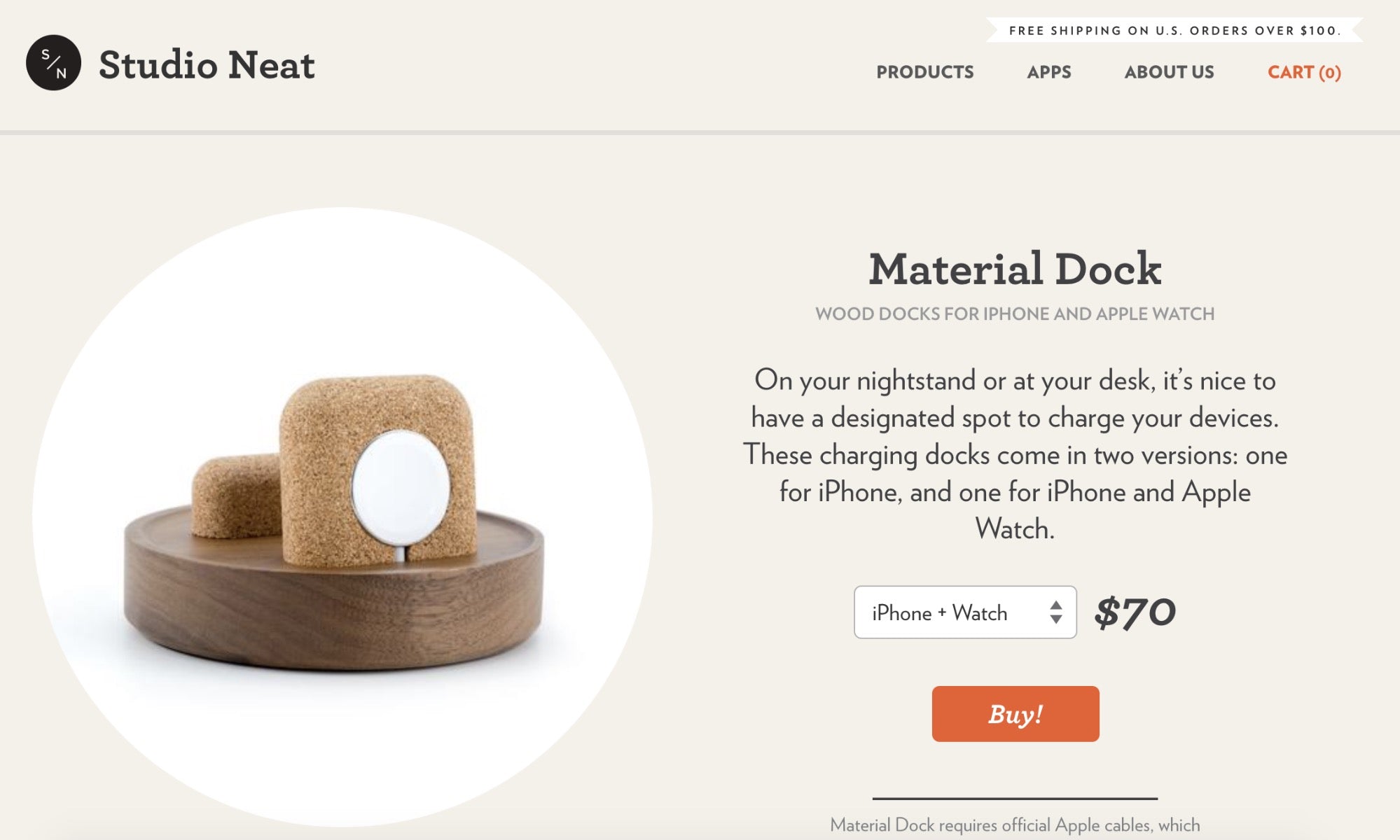
No exaggerations, no complex product details. “On your nightstand or at your desk, it’s nice to have a designated spot to charge your devices.” Tell me that sentence doesn’t read like a customer wrote it himself.
4 important types of value propositions
In ecommerce, your value proposition is more than just the big, bold heading on your homepage. There are four distinct types of value propositions you should know about when optimizing your store.
1. Your company value proposition
Did you know there’s a difference between the value proposition of your company and products?
Take Studio Neat for example. The value proposition for its company would be something like this: “Simple products that solve simple problems.” The value proposition for its Material Dock is: “It’s nice to have a designated spot to charge your devices.” Now, you can see and feel the company value proposition in the product value proposition, but it’s important to see the distinction.
Further, in this article, we’re talking about your external value propositions. It all starts with a strong brand ethos, which is the way you talk about and think about your brand, both internally and externally. For example, Studio Neat’s brand ethos might be something like this: “Subtract until it’s perfect.” You can see how that ethos trickles down through everything, including the company value proposition and the product value propositions.
2. Your homepage value proposition
This is the type of value proposition you’re most familiar with. It’s the big, bold heading on your homepage. Just think back to the Novo Watch value proposition example above.
Your homepage value proposition will depend on the type of store you run. For example, if you have a small number of products, your homepage value proposition might be more product-focused. If you have a wide range of products, your homepage value proposition might be more company- or brand-focused.
Novo Watch’s homepage value proposition is product-focused, for example:
Timepieces handmade in Alberta from repurposed pieces of history.
Novo has a relatively small number of products and is specifically focused on watches. If it were to introduce a line of handcrafted pens made from pieces of history and a line of handcrafted wallets made from pieces of history, how might their homepage value proposition need to change?
3. Your category value propositions
Don’t overlook the need for a value proposition on your category pages. Why? Just look at the search engine results page (SERP) for “women’s jeans.”

First, you’ll notice that all of these pages are category pages.
Second, many of the page descriptions are value propositions in disguise. Abercrombie & Fitch has variety, the perfect fit for everyone. Bootlegger’s black jeans won’t fade. Old Navy jeans will make you look polished, even on a casual day.
When you click through to Abercrombie & Fitch, for example, you’ll see the value proposition reiterated in the on-site copy.
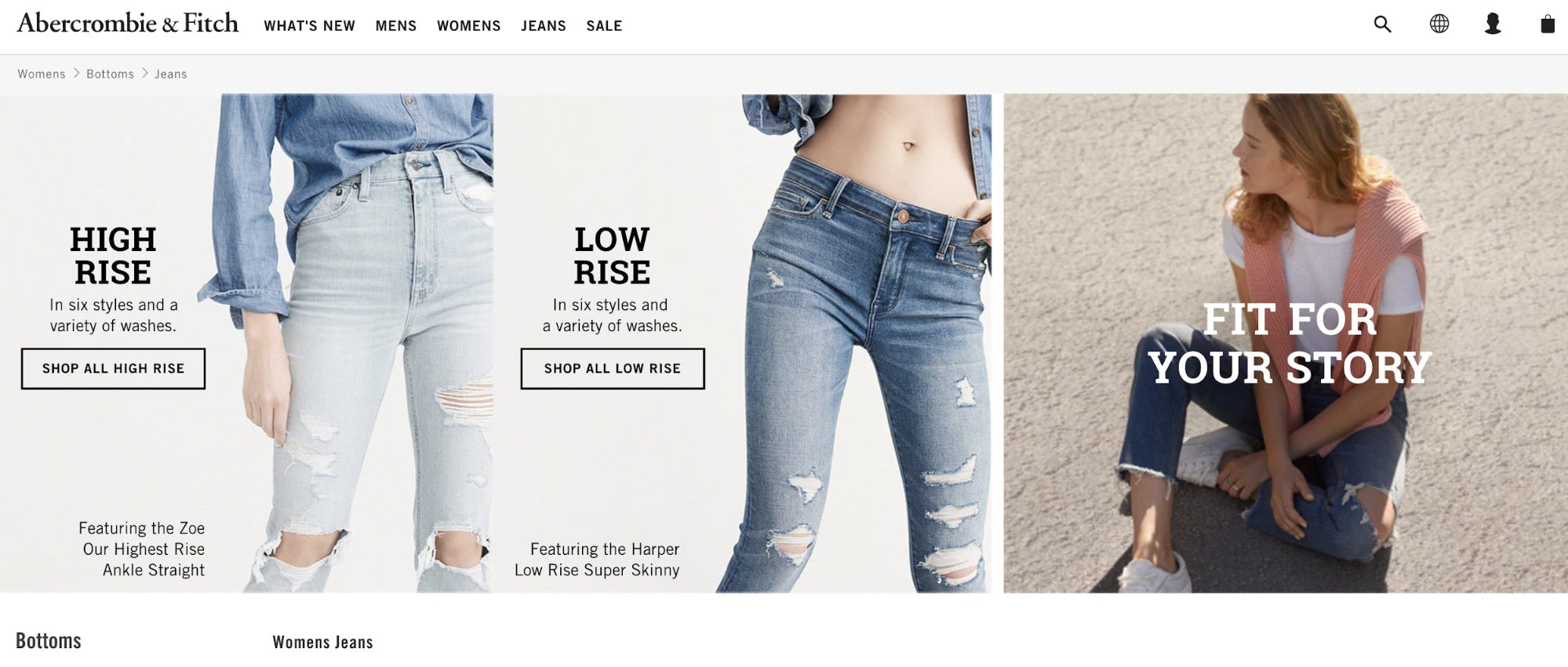
High rise, low rise, a variety of washes, “Fit for your story.” All of these triggers help reinforce the value proposition. As you can see, though, it’s still quite uncommon to find a clear and succinct value proposition on a category page.
With so much competition among category pages, especially on SERPs, that’s a huge missed opportunity that you can step up and capitalize on. Ask yourself what each category of products on your site promises that’s specific, pain-focused, and exclusive.
4. Your product value propositions
A product value proposition goes, you guessed it, on your product page. Each product within each category needs a specific value proposition. Think back to the Neat Studio Material Dock example above.
Here’s another great product value proposition example from Studio Neat.
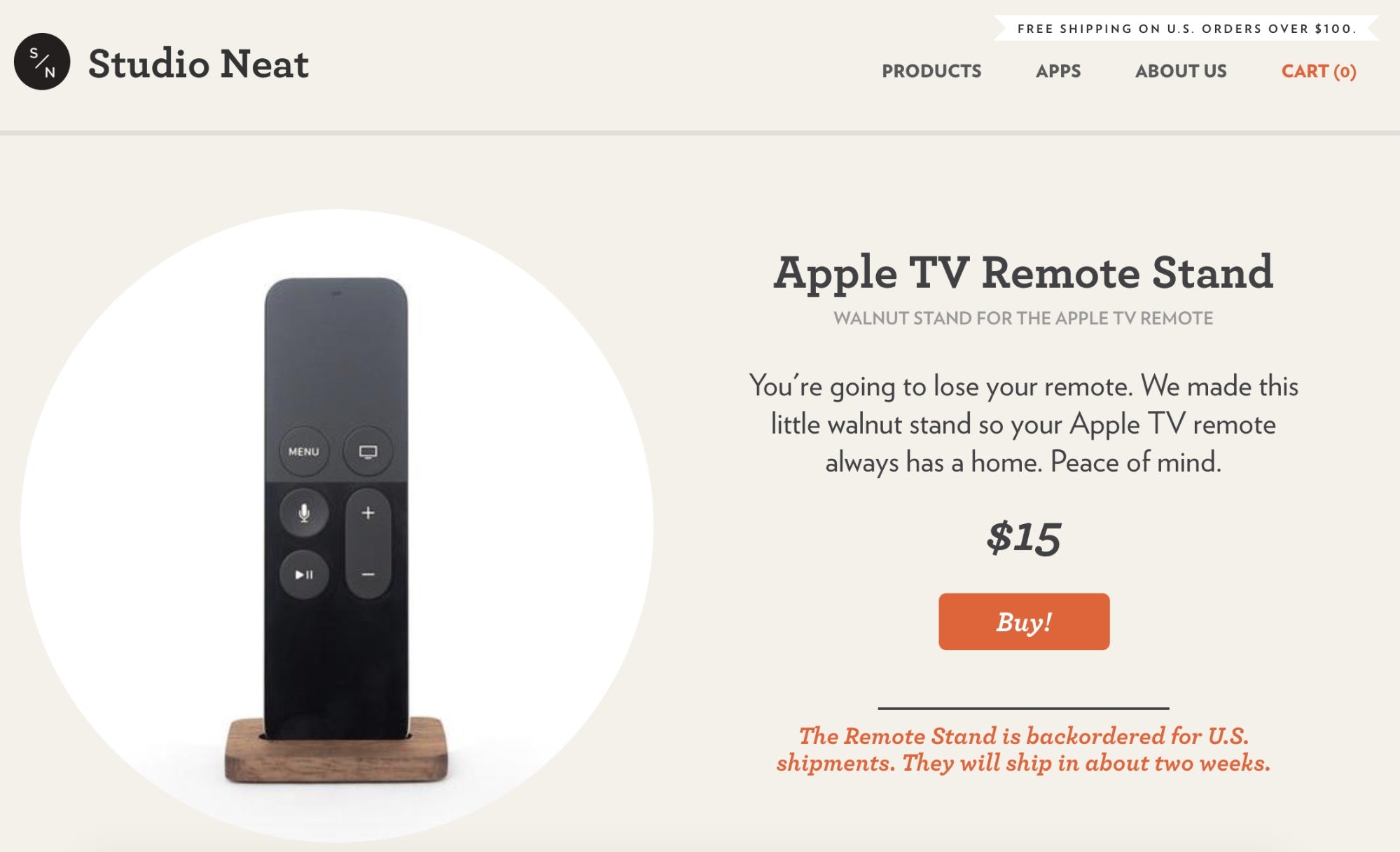
Anyone who has an Apple TV knows that losing that tiny remote is a common occurrence. Instead of having to tear the couch apart a couple times a day, buy Studio Neat’s Apple TV Remote Stand. “You know you’re going to lose it. You won’t if you buy this.”
Simple, right? Perfect, because that’s Studio Neat’s company value proposition.
By now, you’re starting to see how the value propositions trickle into and influence one another. Start with the company value proposition, then the homepage value proposition, then category value propositions, then product value propositions.
A two-step template for creating a value proposition
Now it’s a matter of combining everything you’ve learned about value propositions to craft one of your own. There’s no reason to complicate the matter; the process can be broken down into just two steps:
- Identifying your value proposition.
- Communicating your value proposition.
The question becomes, how do you get both steps right?
Step 1: Identifying your value proposition
Before you dig into identifying your value proposition, it’s important to frame your thinking properly.
All great value propositions start with one question:
- What do I do better than anyone else?
Maybe it’s your customer service, maybe it’s your product design, maybe it’s material quality, maybe it’s price. It can be anything customers find valuable.
A word of caution, though: your company and products are more comparable than you think. Your visitors will certainly be comparing you to your competitors, so beat them to the punch. See how your value proposition stacks up against the promises of your top competitors. What will set you apart in the minds of your visitors?
Note that small values like free shipping, money-back guarantees and same-day delivery can be useful conversion tools, but are secondary to your unique selling proposition.
If your answer to “What do I do better than anyone else?” is “free shipping,” you’re not digging deep enough. That’s something any store can copy and paste, meaning it’s not a defensible value proposition. Often, identifying your value proposition requires quite a bit of thought and research (customer interviews, for example).
Please, promote those free post-purchase gifts and shipping guarantees alongside your value proposition. You will likely capture people on the fence. But that’s just a bandage if the core value proposition isn’t unique or compelling.
Step 2: Communicating your value proposition
Distill what you do better than anyone else into a single sentence and display it prominently. You want to ensure this is what grabs attention first.
Just like an article headline, many people will read the single sentence value proposition and move on. If they like it, they might read a brief elaboration or just continue on to the next step. If they don’t like it, they’ll often just go ahead and leave.
That’s a lot of pressure on just one sentence, so you want to make sure you’re getting it right. That is, you want to make sure it’s clear and relevant.
It’s a useful exercise to spend the time coming up with 10–15 variations of your initial value proposition.
Now, you want to know which one is the most unquestionably clear. A simple five-second test can help you with that. In a five-second test, people see your site (with your value proposition) for five seconds and then answer questions about what they saw. What do they remember? What do they think your site does? What do they think your product does?
If you find people can’t answer the questions correctly, you have a clarity issue. A common clarity problem? Hiding the value. Here’s an example from Best Buy:

“TV & Home Theatre” is prioritized visually here, but the value proposition is hidden below.
Here’s the same problem on Tiffany & Co.:

And on Topshop:

You get the idea. Make sure your value proposition is as clear as possible. The first step? Visually prioritizing your value proposition.
The five-second test is just one way to test your value proposition. You can also run on-site A/B tests to figure out which of your 10–15 variations is most effective. Short of that, running paid Facebook ads to test the persuasion power of each of the variations is another option, especially if you have a low traffic site.
Value propositions help you perfect your promise
Your value proposition is a promise to your future customers. If that promise is specific, pain-focused and exclusive, you will turn future customers into paying customers.
Every entrepreneur believes their company and products are valuable. That’s why it’s so easy to overlook the way that value is communicated to strangers.
Spend the time to perfect your promise. It’s not just a branding exercise, it’s a marketing exercise that will pay off over and over and over again.
